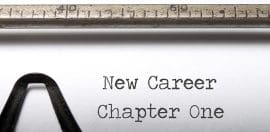Australian Snapshot - ABS Year Book 2005
28 February 2005 at 12:02 pm
The Australian Bureau of Statistics (ABS) predicts the national population could grow to close to 40 million by the end of the century. But it also says the population may also go backwards.
The latest national snapshot by the Australian Bureau of Statistics (ABS) presents a series of fascinating comparisons to the Australia of 100 years ago.
The 87th edition of Year Book Australia, launched in January contains a comprehensive and detailed statistical review of aspects of the economy and social conditions in Australia.
Its publication this year is part of the Centenary celebrations of the ABS.
The Year Book graphically illustrates how very different the age structure of our nation is today compared to the early 1900’s.
At the time the Bureau was set up there were fewer people in age groups over 45 and comparatively fewer people lived beyond 75!
Australia’s population has increased by 12.5% over the past decade.
The Australia Aboriginal population is growing at more than twice the rate of the general community in official figures according to the ABS.
The Aboriginal population increased from 282,979 to 458,520 in the decade to 2001, a 62 per cent increase. Aborigines account for 2.3 per cent of Australia’s 20 million population the bureau found.
The snapshot reveals the nation’s wealth has now hit $5 trillion, with the booming share-market adding an average 15.7 per cent, or $920 billion, to superannuation, life insurance and stock investments.
While still the most common household type, the traditional mix of parents and at least one child is now only 47per cent — or 2.3million — of all households.
That is a 7 per cent decline in a decade, according to the Year Book.
And if present trends continue, the ABS projects that in 20 years fewer than a third of all households will resemble the nuclear family.
The ABS says that the prospect of a shrinking population base is a possibility, if overseas migration is not enough to offset fewer babies being born and if the numbers of deaths rise.
It says the nation is experiencing the second of two long periods of fertility decline since Federation, while marriage rates are also at an all-time low.
In other statistics, death rates have fallen over the past decade, with cancer deaths down by 10 per cent, and deaths from heart diseases down by more than 40 per cent.
The ABS also confirms the trend towards inner city living and the de-population of many rural districts.
At the time of Federation, 64 per cent of Australians lived outside capital cities. These days its around 40 per cent. The trend away from rural districts has only slowed due to the popularity of coastal living.
Metropolitan and large regional centres are the biggest drawcards.
The report also reveals that Aborigines remained the most disadvantaged community in Australia, with a life expectancy 17 years lower than the general population.
To celebrate 100 years of official statistics, both the hard copy Year Book (900 pages) and its CD-ROM companion are presented as a special offer in one package and can be purchased online at www.abs.gov.au.
The statistical coverage includes subjects such as population; labour, income and welfare; housing; health; education; crime and justice; culture and recreation; environment; agriculture; forestry and fishing; mining; energy; manufacturing; construction; service industries; tourism; transport; communications; science and technology; the financial system; government finance; prices; national and international accounts; as well as chapters on Australia’s geography and climate, government, international relations and defence.
This CD-ROM has a web site look and feel and uses an Internet browser to navigate through the contents. It has an electronic searching which enhances its useability as a research and analysis tool. In addition, selected material can be readily copied into other applications if required. This CD-ROM also includes pictorial material not included in the printed book and will operate on both Windows and Macintosh platforms.
The ABS has also produced an 8-page statistical summary in PDF format that is free of charge. If you would like the electronic summary just send us an email with the words ‘ABS 2005 Summary’ in the subject line to probono@probonoaustralia.com.au.







